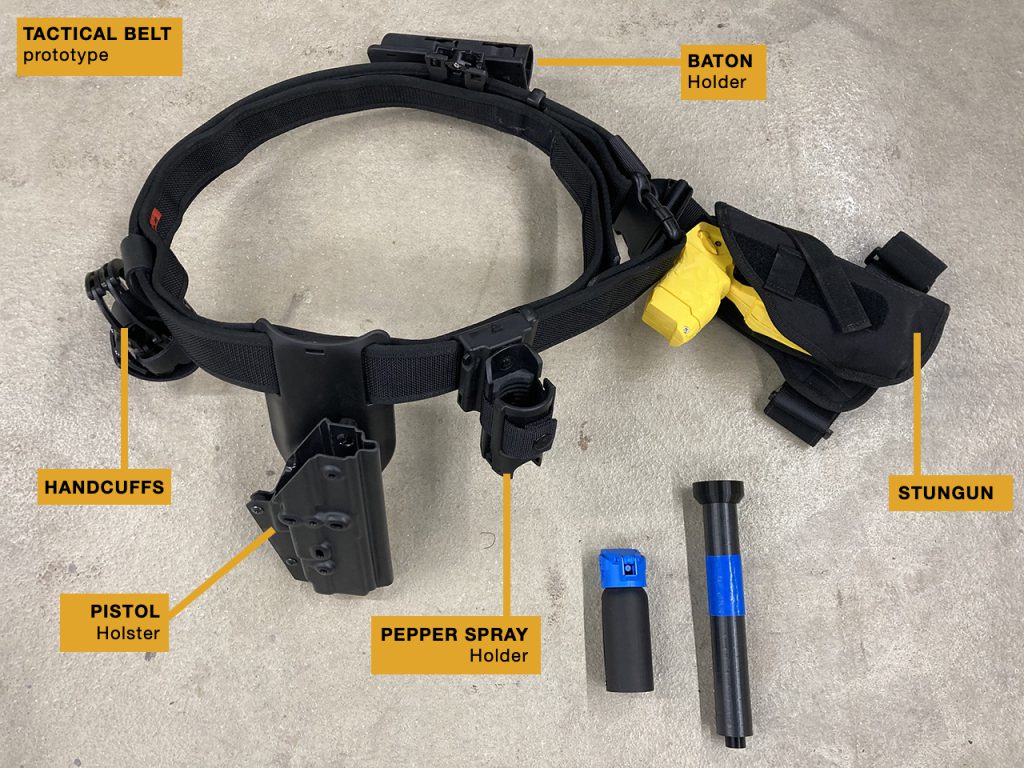Realistic Training?
In many first responder type organizations, instructors refer to the ‘train as you fight’ or ‘fight as you train’ philosophy . According to instructors, the definition of this term is immersing learners in a realistic training environment using realistic equipment. If this equipment is body-worn, then it needs to be present at the place where the learner expects it to stimulate muscle-memory. The definition is a bit problematic though as all training, traditional and VR, is an approximation. No training except the real operation is realistic.
The tactical belt shown below is developed for this ‘train as you fight’ purpose. A mix of passive electronics and 3D printing was used to keep it as affordable as possible.

Is Realistic Always Required?
- Cognitive: thinking
- Affective: feeling, emotions
- Psychomotor: doing
An example
Pilot training is a great example in this area: a pilot uses a scala of tools. Each tool has a place depending on what you need to learn and its efficiency. Pilots start out with e-learning, then move to a Flight Training Device (a mockup dashboard to become more familiar with the controls), followed by the flight simulator and finally, the actual device itself (plane, helicopter, etc).
The reason behind this method is efficiency or whatever the organization you work for is trying to achieve (motivation of learners, increase in quality of learners, etc).
PWC coined the term digital transformation for a good reason….
Disclaimer: this project has received funding from the European Union’s Horizon 2020 Research and Innovation Programme under grant agreement No 833672. The content reflects only the Shotpros consortium’s view. Research Executive Agency and European Commission is not liable for any use that may be made of the information contained herein.